UPDATE: My new book entitled “The Unofficial LEGO Color Guide” is now available. Here is a short video introduction:
LEGO’s color’s palette continues to be mystery to LEGO fans. The Bricks Magazine (#14) dedicated several articles to the topic and several AFOLs had a go at cataloging and understanding the LEGO color spectrum. New Elementary wrote a good post and several collectors attempted to find at least one brick of every LEGO color (Ryan Howerter, Jeremy Moody). LEGO itself seemed to have published its palette in 2010 and 2016. The LEGO Digital Designer also comes with its own color palette:
There are several lists available that catalog LEGO colors and Ryan Horwerter’s seems to be the most complete but certainly not the only one:
- Ryan Howerter’s color list
- Peeron Color List
- Peeron’s Official LEGO™ Color Chart
- Bricklink’s color list that can be downloaded
- LDraw’s color definitions
- Clark Stephens’ list
- Brickowl’s color list
- Linus Bohman’s list which features a downloadable JSON file
But here comes the catch. All of these lists, including the official ones from LEGO, disagree on the actual RGB value for every color! Lets take the example of Brick Yellow (Tan). The different websites and color palettes define it as:
| Source | Red | Green | Blue | Color |
|---|---|---|---|---|
| LEGO Palette 2010 | 217 | 187 | 123 | |
| LEGO Plaette 2016 | 221 | 196 | 142 | |
| LEGO LDD | 176 | 160 | 111 | |
| Peeron | 215 | 197 | 153 | |
| Ryan Horwerter | 176 | 160 | 111 | |
| Bricklink | 222 | 198 | 156 | |
| Ldraw | 228 | 205 | 158 | |
| Clark Stephen | 215 | 197 | 153 | |
| Brickowl | 222 | 198 | 156 | |
| Linus Bohman | 176 | 160 | 111 | |
| Panatone 467 C | 211 | 188 | 141 |
The first time Peeron acquired information about the Official LEGO Color Palette they also listed Pantone codes (PMS). This is no surprise since Pantone has been the market leader with their color matching system. It allowed designers to specify the color of the desired product using a fan of 1,114 spot colors that could be mixed using Pantone’s 14 pigments. Notice that the Pantone color space goes way beyond what can be achieved with CMYK, which also contributed to its popularity. Pantone comes from the printing world and they only slowly adopted to the needs of digital media. They did not bother with translating their 1,114 spot colors to RGB for a long time. You might think that using PMS colors should be the end of the problem, but that is unfortunately not true. Peeron has listed the wrong RGB values for the Pantone 467 C.
Brick Yellow is defined as Pantone 467 C, which is officially 211-188-141 or #d3bc8d in hex:
So lets compare the official Pantone 467 C to an actual brick:
One might argue that the bricks I have are a little bit closer to 468 C, but that might be a personal impression. When you select this PMS color in Illustrator and check its RGB value you get yet a different result:
Even worse, if you enter the CMYK values for the color you get a different RGB value from what Pantone defined:
So where does this leave us? In utmost confusion! There does not seem to be a clear path to convert PMS to RGB or CMYK. We also need to consider that LEGO might be using at least two color systems, one for its bricks and one for its print and media products. For the bricks they could be using the Pantone Color Matching Tools for Plastics while they could or could not use Pantone colors for their print and media products. But even then, converting the PMS color to RGB or CMYK is not straight forward and LEGO has been inconsistent themselves.
I will try to confront LEGO with these results and maybe, just maybe, will we get an answer from them that go beyond what they already shared.
In the meantime, you might find the LEGO 2016 Color Palette for Adobe Swatches useful. You may also consider this table of Pantone based LEGO colors useful. I limited to the colors to solid colors. The RGB values are based on what Pantone defines as its official values. Given that LEGO probably started out with Pantone colors, this might be a good guess at the colors.
321Dark Azur153
Dark Azure/td>
2170 C5F9BC695155198
| LEGO ID | LEGO Name | Bricklink ID | Bricklink Name | Pantone | Pantone HEX | Red | Green | Blue |
|---|---|---|---|---|---|---|---|---|
| 1 | White | 1 | White | CoolGray 1 C | D9D9D6 | 217 | 217 | 214 |
| 2 | Grey | 9 | Light Gray | 422 C | 9EA2A2 | 158 | 162 | 162 |
| 3 | Light Yellow | 33 | Light Yellow | 1215 C | FBD872 | 251 | 216 | 114 |
| 4 | Brick Red | 106 | Fabuland Brown | 7416 C | E56A54 | 229 | 106 | 84 |
| 5 | Brick Yellow | 2 | Tan* | 467 C | D3BC8D | 211 | 188 | 141 |
| 6 | Light Green | 38 | Light Green | 351 C | A2E4B8 | 162 | 228 | 184 |
| 7 | Orange | 715 C | F68D2E | 246 | 141 | 46 | ||
| 9 | Light Reddish Violet | 23 | Pink* | 203 C | ECB3CB | 236 | 179 | 203 |
| 11 | Pastel Blue | 72 | Maersk Blue | 277 C | ABCAE9 | 171 | 202 | 233 |
| 12 | Light Orange Brown | 29 | Earth Orange | 1385 C | D57800 | 213 | 120 | 0 |
| 13 | Red Orange | 151 C | FF8200 | 255 | 130 | 0 | ||
| 15 | Lemon | 395 C | ECE81A | 236 | 232 | 26 | ||
| 18 | Nougat | 28 | Flesh | 472 C | E59E6D | 229 | 158 | 109 |
| 19 | Light Brown | 160 | Fabuland Orange | 7564 C | DB8A06 | 219 | 138 | 6 |
| 21 | Bright Red | 5 | Red | Red 032 C | EF3340 | 239 | 51 | 64 |
| 22 | Medium Reddish Violet | 47 | Dark Pink* | 2375 C | E277CD | 226 | 119 | 205 |
| 23 | Bright Blue | 7 | Blue | 293 C | 003DA5 | 0 | 61 | 165 |
| 24 | Bright Yellow | 3 | Yellow | 116 C | FFCD00 | 255 | 205 | 0 |
| 25 | Earth Orange | 8 | Brown | 469 C | 693F23 | 105 | 63 | 35 |
| 26 | Black | 11 | Black | Process Black C | 27251F | 39 | 37 | 31 |
| 27 | Dark Grey | 10 | Dark Gray | 418 C | 51534A | 81 | 83 | 74 |
| 28 | Dark Green | 6 | Green | 348 C | 00843D | 0 | 132 | 61 |
| 29 | Medium Green | 37 | Medium Green | 353 C | 80E0A7 | 128 | 224 | 167 |
| 36 | Light Yellowish Orange | 96 | Very Light Orange | 148 C | FECB8B | 254 | 203 | 139 |
| 37 | Bright Green | 36 | Bright Green | 355 C | 9639 | 0 | 150 | 57 |
| 38 | Dark Orange | 68 | Dark Orange | 471 C | B86125 | 184 | 97 | 37 |
| 39 | Light Bluish Violet | 44 | Light Violet | 2706 C | CBD3EB | 203 | 211 | 235 |
| 45 | Light Blue | 62 | Light Blue | 545 C | C6DAE7 | 198 | 218 | 231 |
| 100 | Light Red | 26 | Light Salmon | 169 C | FFB3AB | 255 | 179 | 171 |
| 101 | Medium Red | 25 | Salmon | 170 C | FF8674 | 255 | 134 | 116 |
| 102 | Medium Blue | 42 | Medium Blue | 284 C | 6CACE4 | 108 | 172 | 228 |
| 103 | Light Grey | 49 | Very Light Gray | 421 C | B2B4B2 | 178 | 180 | 178 |
| 104 | Bright Violet | 24 | Purple | 2592 C | 9B26B6 | 155 | 38 | 182 |
| 105 | Bright Yellowish Orange | 31 | Medium Orange | 137 C | FFA300 | 255 | 163 | 0 |
| 106 | Bright Orange | 4 | Orange | 151 C | FF8200 | 255 | 130 | 0 |
| 107 | Bright Bluish Green | 39 | Dark Turquoise | 327 C | 8675 | 0 | 134 | 117 |
| 108 | Earth Yellow | 1405 C | 6E4C1E | 110 | 76 | 30 | ||
| 110 | Bright Bluish Violet | 43 | Violet | 2736 C | 1E22AA | 30 | 34 | 170 |
| 112 | Medium Bluish Violet | 73 | Medium Violet* | 2726 C | 485CC7 | 72 | 92 | 199 |
| 115 | Medium Yellowish Green | 76 | Medium Lime | 381 C | CEDC00 | 206 | 220 | 0 |
| 116 | Medium Bluish Green | 40 | Light Turquoise | 326 C | 00B2A9 | 0 | 178 | 169 |
| 118 | Light Bluish Green | 41 | Aqua | 324 C | 9CDBD9 | 156 | 219 | 217 |
| 119 | Bright Yellowish Green | 34 | Lime | 390 C | B5BD00 | 181 | 189 | 0 |
| 120 | Light Yellowish Green | 35 | Light Lime | 365 C | C2E189 | 194 | 225 | 137 |
| 121 | Medium Yellowish Orange | 32 | Light Orange | 1365 C | FFB549 | 255 | 181 | 73 |
| 123 | Bright Reddish Orange | 165 C | FF671F | 255 | 103 | 31 | ||
| 124 | Bright Reddish Violet | 71 | Magenta | 241 C | AF1685 | 175 | 22 | 133 |
| 125 | Light Orange | 1555 C | FFB990 | 255 | 185 | 144 | ||
| 128 | Dark Nougat | 471 C | B86125 | 184 | 97 | 37 | ||
| 133 | Neon Orange | 165 C | FF671F | 255 | 103 | 31 | ||
| 134 | Neon Green | 374 C | C5E86C | 197 | 232 | 108 | ||
| 135 | Sand Blue | 55 | Sand Blue | 5415 C | 5B7F95 | 91 | 127 | 149 |
| 136 | Sand Violet | 54 | Sand Purple | 666 C | A192B2 | 161 | 146 | 178 |
| 137 | Medium Orange | 1575 C | FF7F32 | 255 | 127 | 50 | ||
| 138 | Sand Yellow | 69 | Dark Tan | 451 C | 9B945F | 155 | 148 | 95 |
| 140 | Earth Blue | 63 | Dark Blue | 2955 C | 3865 | 0 | 56 | 101 |
| 141 | Earth Green | 80 | Dark Green | 350 C | 2C5234 | 44 | 82 | 52 |
| 144 | Dark Army Green | 5487 C | 5D7975 | 93 | 121 | 117 | ||
| 151 | Sand Green | 48 | Sand Green | 624 C | 789F90 | 120 | 159 | 144 |
| 153 | Sand Red | 58 | Sand Red | 4995 C | 9C6169 | 156 | 97 | 105 |
| 154 | (New) Dark Red | 59 | Dark Red | 194 C | 9B2743 | 155 | 39 | 67 |
| 180 | Curry | 161 | Dark Yellow | 131 C | CC8A00 | 204 | 138 | 0 |
| 190 | Fire Yellow | Yellow 012 C | FFD700 | 255 | 215 | 0 | ||
| 191 | Flame Yellowish Orange | 110 | Bright Light Orange | 137 C | FFA300 | 255 | 163 | 0 |
| 192 | Reddish Brown | 88 | Reddish Brown | 499 C | 7A3E3A | 122 | 62 | 58 |
| 193 | Flame Reddish Orange | 173 C | CF4520 | 207 | 69 | 32 | ||
| 194 | Medium Stone Grey | 86 | Light Bluish Gray | 429 C | A2AAAD | 162 | 170 | 173 |
| 195 | Royal Blue | 97 | Blue-Violet | 2728 C | 0047BB | 0 | 71 | 187 |
| 196 | Dark Royal Blue | 109 | Dark Blue-Violet | 286 C | 0033A0 | 0 | 51 | 160 |
| 198 | Bright Reddish Lilac | 93 | Light Purple | 254 C | 981D97 | 152 | 29 | 151 |
| 199 | Dark Stone Grey | 85 | Dark Bluish Gray | 431 C | 5B6770 | 91 | 103 | 112 |
| 208 | Light Stone Grey | 99 | Very Light Bluish Gray | 428 C | C1C6C8 | 193 | 198 | 200 |
| 209 | Dark Curry | 118 C | AC8400 | 172 | 132 | 0 | ||
| 210 | Faded Green | 364 C | 4A7729 | 74 | 119 | 41 | ||
| 211 | Turquoise | 3255 C | 2CD5C4 | 44 | 213 | 196 | ||
| 212 | Light Royal Blue | 105 | Bright Light Blue | 292 C | 69B3E7 | 105 | 179 | 231 |
| 213 | Medium Royal Blue | 2727 C | 307FE2 | 48 | 127 | 226 | ||
| 216 | Rust | 174 C | 963821 | 150 | 56 | 33 | ||
| 217 | Brown | 91 | Dark Flesh | 161 C | 603D20 | 96 | 61 | 32 |
| 218 | Reddish Lilac | 2573 C | B884CB | 184 | 132 | 203 | ||
| 219 | Lilac | 73 | Medium Violet* | 2725 C | 685BC7 | 104 | 91 | 199 |
| 220 | Light Lilac | 2716 C | 9FAEE5 | 159 | 174 | 229 | ||
| 221 | Bright Purple | 47 | Dark Pink* | 232 C | E93CAC | 233 | 60 | 172 |
| 222 | Light Purple | 104 | Bright Pink | 236 C | F1A7DC | 241 | 167 | 220 |
| 223 | Light Pink | 183 C | FC9BB3 | 252 | 155 | 179 | ||
| 224 | Light Brick Yellow | 7501 C | D9C89E | 217 | 200 | 158 | ||
| 225 | Warm Yellowish Orange | 713 C | FDBE87 | 253 | 190 | 135 | ||
| 226 | Cool Yellow | 103 | Bright Light Yellow | 120 C | FBDB65 | 251 | 219 | 101 |
| 232 | Dove Blue | 87 | Sky Blue | 311 C | 05C3DE | 5 | 195 | 222 |
| 268 | Medium Lilac | 89 | Dark Purple | 2685 C | 330072 | 51 | 0 | 114 |
| 269 | Tiny-Medium Blue | 7459 C | 4298B5 | 66 | 152 | 181 | ||
| 283 | Light Nougat | 90 | Light Flesh | 712 C | FCC89B | 252 | 200 | 155 |
| 308 | Dark Brown | 120 | Dark Brown | Black 4 C | 31261D | 49 | 38 | 29 |
| 322 | Medium Azur | 156 | Medium Azure | 297 C | 71C5E8 | 113 | 197 | 232 |
| 323 | Aqua | 152 | Light Aqua | 566 C | B9DCD2 | 185 | 220 | 210 |
| 324 | Medium Lavender | 157 | Medium Lavender | 2583 C | A05EB5 | 160 | 94 | 181 |
| 325 | Lavender | 154 | Lavender | 529 C | CAA2DD | 202 | 162 | 221 |
| 326 | Spring Yellowish Green | 158 | Yellowish Green | 372 C | D4EB8E | 212 | 235 | 142 |
| 330 | Olive Green | 155 | Olive Green | 5763 C | 737B4C | 115 | 123 | 76 |
| 56 | Light Pink | 7436 C | EEDAEA | 238 | 218 | 234 |

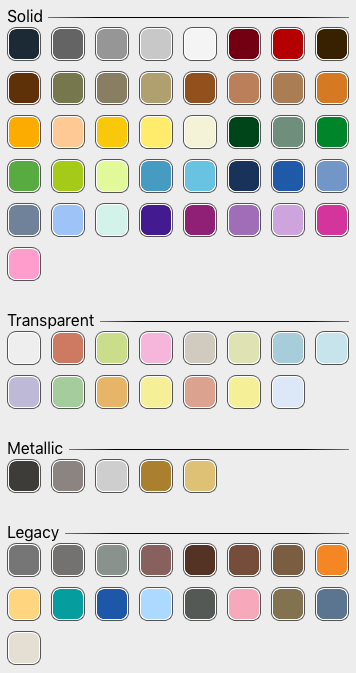
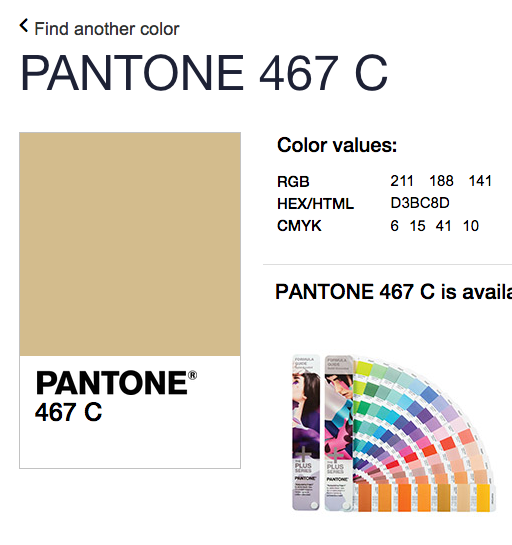
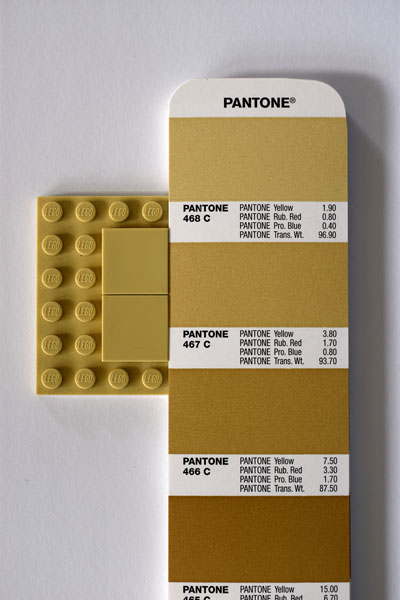
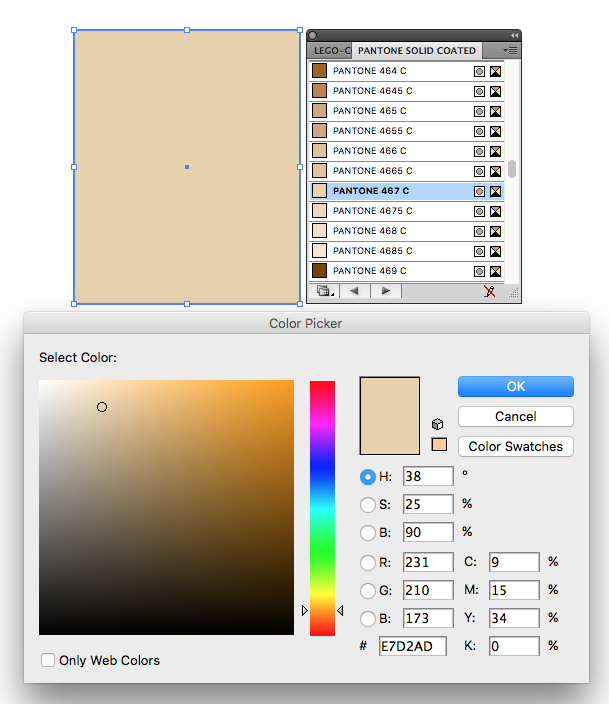
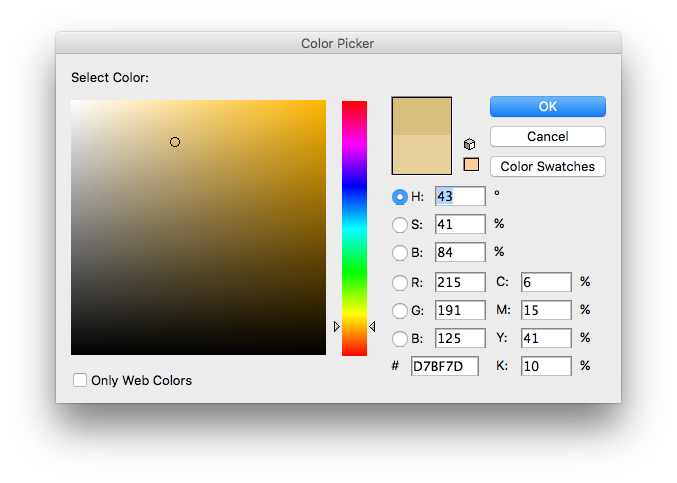
Do you have the Pantone information for Lego’s Dark Azur, Lego ID 321? I can’t find info for it anywhere. Any help would be appreciated!
That should be 2170 C. I am sorry that it was missing from the list.
Thank you!
Great article, thank you. Should Medium Nougat/Medium Dark Flesh be somewhere around there?
Hi,
Pantone colors in Illustrator are NOT accurate on screen. When printed professionally it will match the book.
Hello! I need the color codes abaout Medium Nougat/Dark Flesh too…
I can’t find them nowhere!
Thank you very much, great article!
Your observations are astute, there is considerable disagreement between online sources listing colors. In addition to the complexity, there are two additional points that you might not have considered:
1) Lego is changing their color pallet w/o telling us. As they are changing the chemical composition of their bricks to make them less brittle, stronger, more durable, cheaper, more light-fast, and an number of other properties, they are altering the colors that are produced, intentionally or incidentally.
2) Lego bricks are affected by UV light. Even if everybody measured their colors with a perfect tool right out of the box, there is no way to know how much UV light they were exposed to before being put in the packaging.
3) Some colors are very hard to correctly mix in a consistent fashion. If you compare new purples from the same set, you will find a noticeable variance in the bricks.
Trying to nail down a single ‘true’ color is a interesting goal, but it might not be entirely reasonable.
Only just reached your site. I’ve been trying to map the RGB values for LEGO colours across Peeron Color List, Howerter Color List, Bricklink Colour Guide, LDraw Colour Definition, and (via Howerter -) the Pantone Color site. Most LEGO > Consumer communication these days is via the web, and HTML rendering is the standard. Already concluded, as you do, that it’s inconsistent.
Question: Why the assumption that Pantone is the standard color system?
Given that LEGO is Danish, and they are in the top 5 buyers of BASF ABS plastics (and collaborate closely with BASF in production), surely it is more probable that they communicate using the European/German RAL colour standard? OTOH, when they specify colours to the Chinese factories … what do they use then?
Oh heck, does anybody REALLY know?
greytery
You can’t accurately represent the visual properties of real Lego parts with Pantone colours. There are Pantone colours for coated paper and uncoated paper, but I have never come across Pantone ABS.
By definition, many Pantone colours can’t be expressed accurately as RGB or CMYK, if they could, then you wouldn’t need Pantone colours. Any ‘official’ Adobe or Pantone translations you see are just educated guesses. Other guesses may be just as good, especially with ‘dirty’ colours (ones that combine all four of C, M, Y and K).
Adobe doesn’t really understand colour repro in any case. Try converting any photograph with lots of black on it from RGB to CMYK in Photoshop and grit your teeth in frustration.
It is futile trying to express CMYK colours to second digit accuracy. I am reliably told by Doug Rose, who has spent his whole working life with colour repro, that there isn’t a litho press in the world that can print at that level of accuracy. Expressing the last digit as anything other than 5 or 0 is just wishful thinking.
Color Science in general is a very deep rabbit hole, full of “best guesses,” “educated guesses,” “lucky guesses,” and Just Plain Magic. I worked on an RGB-to-photomaterials (film, paper) product from 1988 to 1997, the intended market being the ability to produce a single, color-accurate, proof print showing what a CMYK image printed in newspaper/magazine halftone would look like, without actually having to tool up a gigantic CMYK press and run hundreds of feet of paper just for test purposes. This obviously drastically improved digital-image-workstation tweak-and-print cycle time!
The problem is that trying to match the colors of *any* two objects is a very subtle challenge, because you’re talking about *human-perceived* color, which is affected by all sorts of things, including but not limited to: illumination type (incandescent, fluorescent, daylight — and, I’m sure, now also LEDs of probably multiple different sets of properties), dye set (film vs ink) or display phosphors/filters (CRT, LCD, etc.) and the resulting “color gamut” (set of colors that can be produced at all, let alone matched to anything else), and of course the specific biochemistry of the observer’s eyes’ rods-and-cones! (The “standard” human retina is trichromatic, with sensors that detect with varying sensitivity a range of light frequencies/wavelengths that only rather loosely correspond to what we *think we see* as “red, green, and blue,” but even then, there are occasional rare individuals who are *tetra*chromats, and have a *fourth* sensor and therefore see color entirely differently than the rest of us, in ways that, of course, are difficult or impossible to meaningfully describe, one to the other.
So, putting two color samples next to each other and concluding that “they’re the same” is a very tricky process: it may be true, “under the exact conditions here-and-now,” whatever they are, but may be completely, even drastically, *un*true at other places under other conditions.
No two color monitors (screens) are quite exactly the same, either, and none of them are *at all* exactly the same as dye sets (in plastic bricks, Pantone color patches, printed manuals, photos, etc.). Certainly holding a LEGO brick up to a computer screen and adjusting RGB values until “they match” is going to be wildly error-prone and produce wildly different “right” RGB values between monitors, bricks, room lighting conditions, etc. etc. etc.!
I have to wonder how much of the drastic differences among various individuals’ and organizations’ assessments of LEGO color RGB values is due to innocent ignorance of all this, and resulting failure to take the various factors into account. What needs to happen is that someone, somewhere, needs to first define all the parameters for a “standard” LEGO color measurement system: what kind of instrument will be used to measure the color, what its illumination light source shall be, what other conditions shall be ensured (brick age and time-since-rolling-off-the-assembly-line, etc.), etc. Once *that* is standardized, we might start to see better consistency among measurements taken at different places and times.
Meanwhile, we have to hope that the various sources’ RGB values at least *cluster* more-or-less closely around some nebulous average value for each color. I plan to write a program to 3D plot the color database(s) such as I can find, and see for myself!
In any case, I’m also interested in *why* we’re so interested in LEGO color RGB values. Are we building color-accurate models of real-world objects? Mosaic panels to reproduce photographs? Something else? For the vast majority of “sit down and have fun” LEGO purposes I’d think color exactitude would be a non-issue.
Commenter Chiesa is on to something. There must be a shortcut.
There is an existing scheme for translating between the measured light in a photographic scene and the reproduction of that scene using a display device such as a common video or computer display. The Academy Color Encoding System (ACES) provides a rigorous mathematical model for translation between “scene referred” color and “display referred” color, for a practically infinite combination of capture and display technologies. It has taken some time to catch on, but it is now an off-the-shelf exercise to translate images captured by an ACES-qualified camera to, for example, the sRGB color space which has been used in most Lego color surveys.
Check the latest version of your video or image editor to see if ACES support is available. Google your camera model and “ACES” to find information about converting images from that device. Hints: the camera-to-ACES conversion is termed an “Input Device Transform” (IDT), the ACES-to-display conversion is termed an “Output Device Transform” (ODT).
The work flow is: camera > convert camera-to-ACES > convert ACES-to-display > display
By adopting an existing standardized color management system for commonly available input and output devices, the community can save time and avoid error and quickly learn to make apples-to-apples color surveys.
https://www.oscars.org/science-technology/sci-tech-projects/aces
https://en.wikipedia.org/wiki/Academy_Color_Encoding_System
Pardon my late comment, but there’s a gap of information here: from what source were the tabled Pantone colors derived? I’m not even sure from where the article’s definition of Brick Yellow as “467 C” is derived… Peeron? And how was that information validated?
Plus the RGB values provided in the table don’t match those of the ASE Palette to which you’ve linked (at least none of the palette’s named colors), thus it seems that even an article pointing out the broader color definition variances has its own inconsistencies?
Only the LEGO company knows what their exact colors are. There has never been an official and accurate source of information. Furthermore, the Pantone colors used for printing are unsuitable for plastic colors. The closest thing I could do was to measure the colors with a colorimeter. The RGB values produced is only half the equation. The other half is the color reproduction. How your screen or printer translates the RGB value is a not standardised. Only ICC profiles can help with it.
The only proper way would be using CXF / Lab / Reflective Spectrum color standards that Lego is using internally. But they will never give us this information, because we would be able to analyze the production tolerances if the would.
The best effort would be to measure a relevant population of parts with a flat surface (2×1 or bigger, tiles…) and create an average reflection spectrum and Lab value. From this it would be possible to calculate device specific RGB for a calibrated monitor via an ICC Profile >> Same for CMYK printing.
Nevertheless you would also need to consider Metamerism. The lighting of the bricks will be very important when you do any comparison between a Lego piece and a pantone swatch, print or monitor picture.
Normaly D50 is used, which corresponds to Daylight on a sunny day ;-). The LEDs that are used mainly today can lead to big metamerism effect.
https://en.wikipedia.org/wiki/Metamerism_(color)